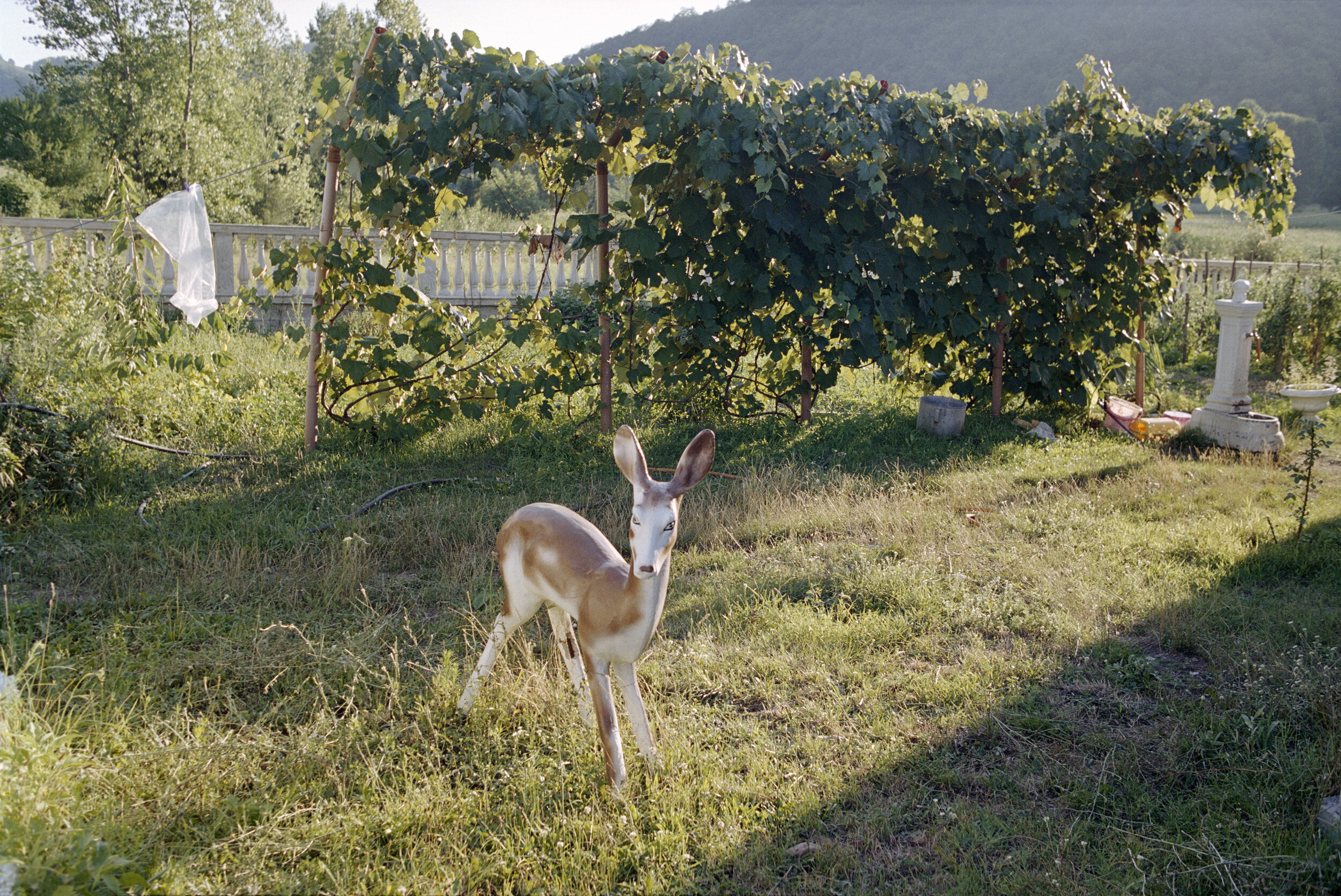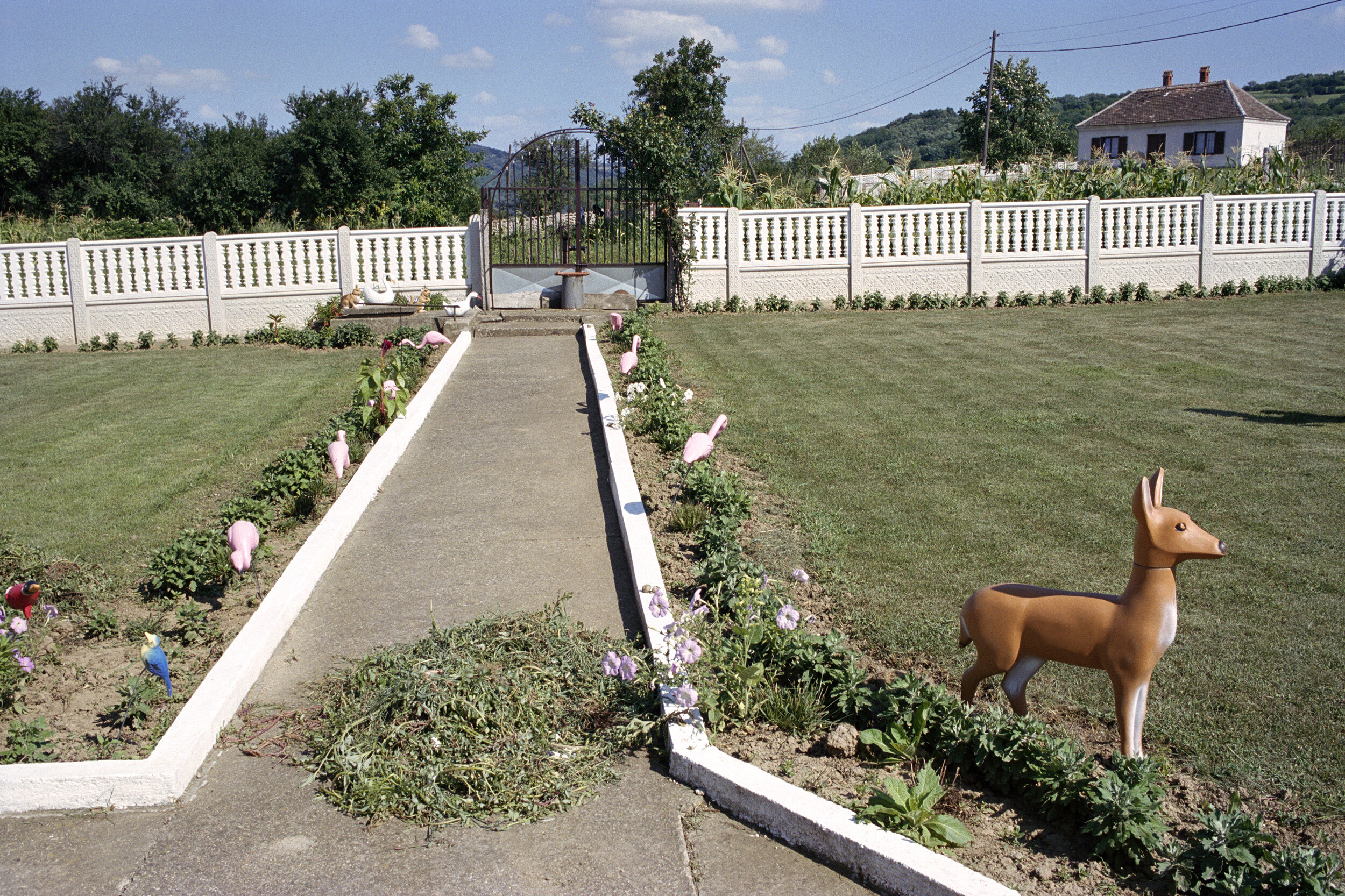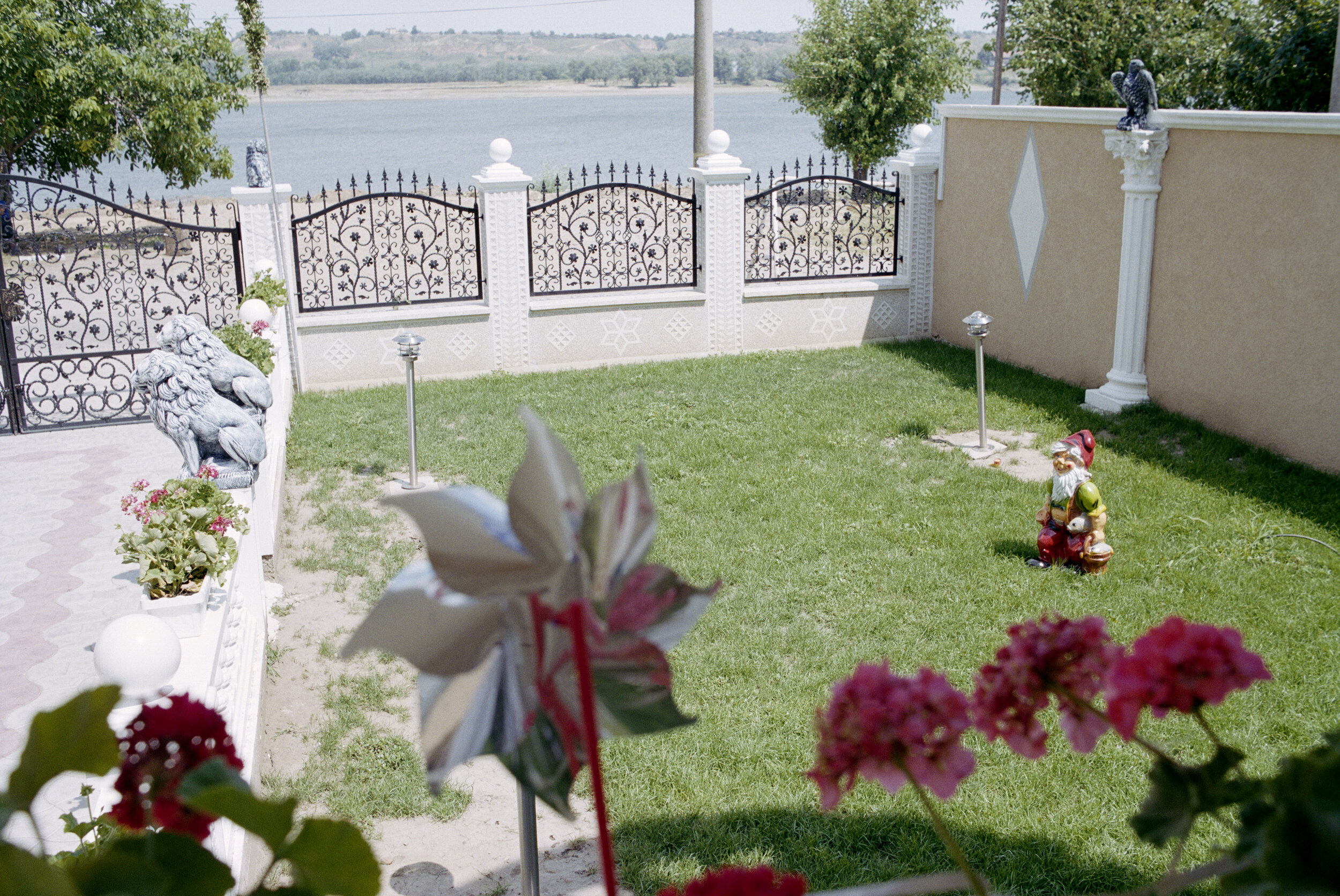Sculpture Gardens
Sculpture Gardens series depicts the garden showcases of the Vlachs, the minority group in Eastern Serbia, and their eclectic taste. Gardens have significant meaning in the cultural identity of the Vlach. They are seen as visual representations of Vlachs’ status and wealth. As economic migrants from the countries of former Yugoslavia,
being ‘guest-workers’ in the countries of Western Europe, they have appropriated the elements of high aristocratic culture and translated it into their own cultural codes. Gardens are also observed here as specific collections of artifacts.
‘The social reality behind the Vlach culture is more dismal than alluring. These are working-class people perpetually toiling abroad in order to establish themselves back in their homeland as members of the leisure class. Their houses and gardens are luxurious edifices – facades of prosperity and fairy-tale dreams of wealth – achieved through hard labor, long hours, stoic saving and restraint, and living in closed Gastarbeiter communities, isolated from modern public life. The Vlach gardens can be seen as a culture written in space, testimonials that their absent inhabitants are still present. In addition, for an ethnic group with no written language, this visual representation has become the dominant model to ‘speak,’ not only to their own people, but also to their broader cultural surroundings.’ Jelena Vesić, Fusebox, 2005



















